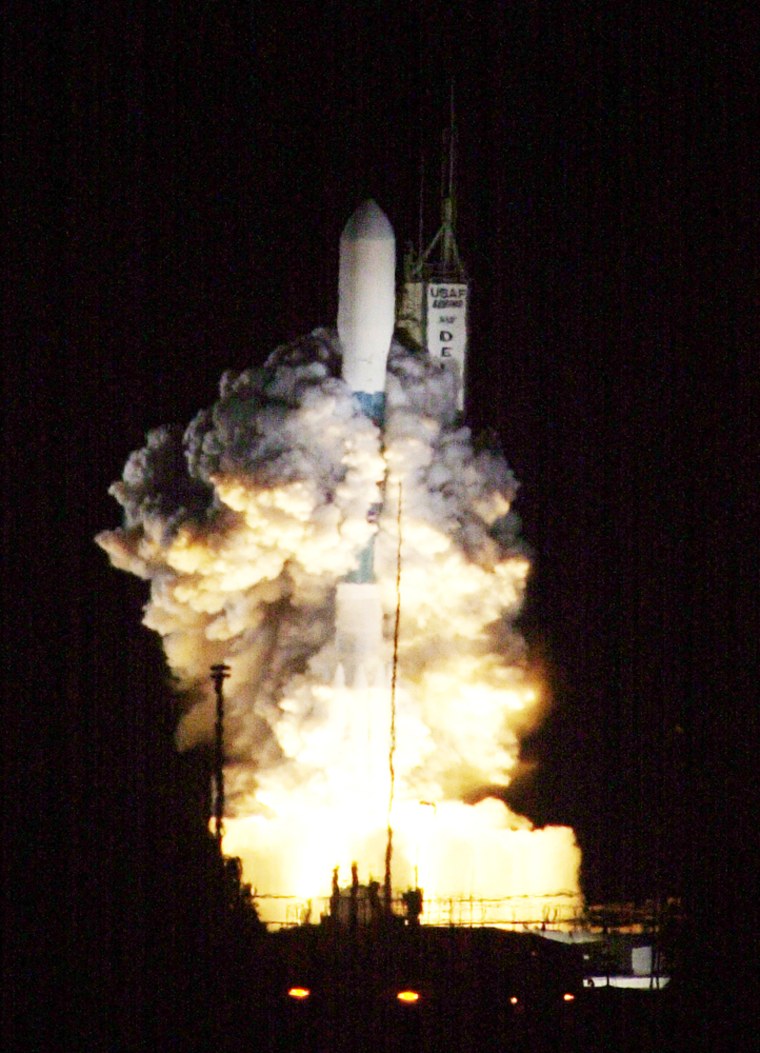NASA launched twin satellites Wednesday on a mission to study huge eruptions from the sun that can damage satellites, disrupt electrical systems on Earth and endanger spacewalking astronauts.
The two spacecraft, known as STEREO, for Solar Terrestrial Relations Observatory, blasted off, stacked one on top of the other, aboard a single Delta 2 rocket.
Scientists hope the $550 million, two-year mission will help them understand why these eruptions occur, how they form and what path they take.
The eruptions — called solar flares — typically blow a billion tons of the sun's atmosphere into space at a speed of 1 million mph. The phenomenon is responsible for the Northern Lights, or aurora borealis, the luminous display of lights seen in the upper latitudes of the Northern Hemisphere.
"Of the bazillion stars that we have in our night sky, the sun is the only one that counts," said NASA scientist Madhulika Guhathakurta. "Any understanding or breakthrough we can make in understanding the sun and the sun's environment is of direct relevance to every human being on this planet."
The two observatories will provide scientists with the first-ever three-dimensional view of the sun by working in tandem, like a set of eyes, in different orbits.
NASA hopes information about the solar flares helps the astronauts who fly to moon and eventually Mars in the coming decades. Astronauts exposed to the eruptions can receive a year's worth of radiation.
The spacecraft's launch was delayed several times this year because of technical problems.
Scientists plan to release to the public movies and other images created by the STEREO spacecraft, though viewers may need to use an updated version of the 3-D glasses worn for movies like "Creature From the Black Lagoon."
